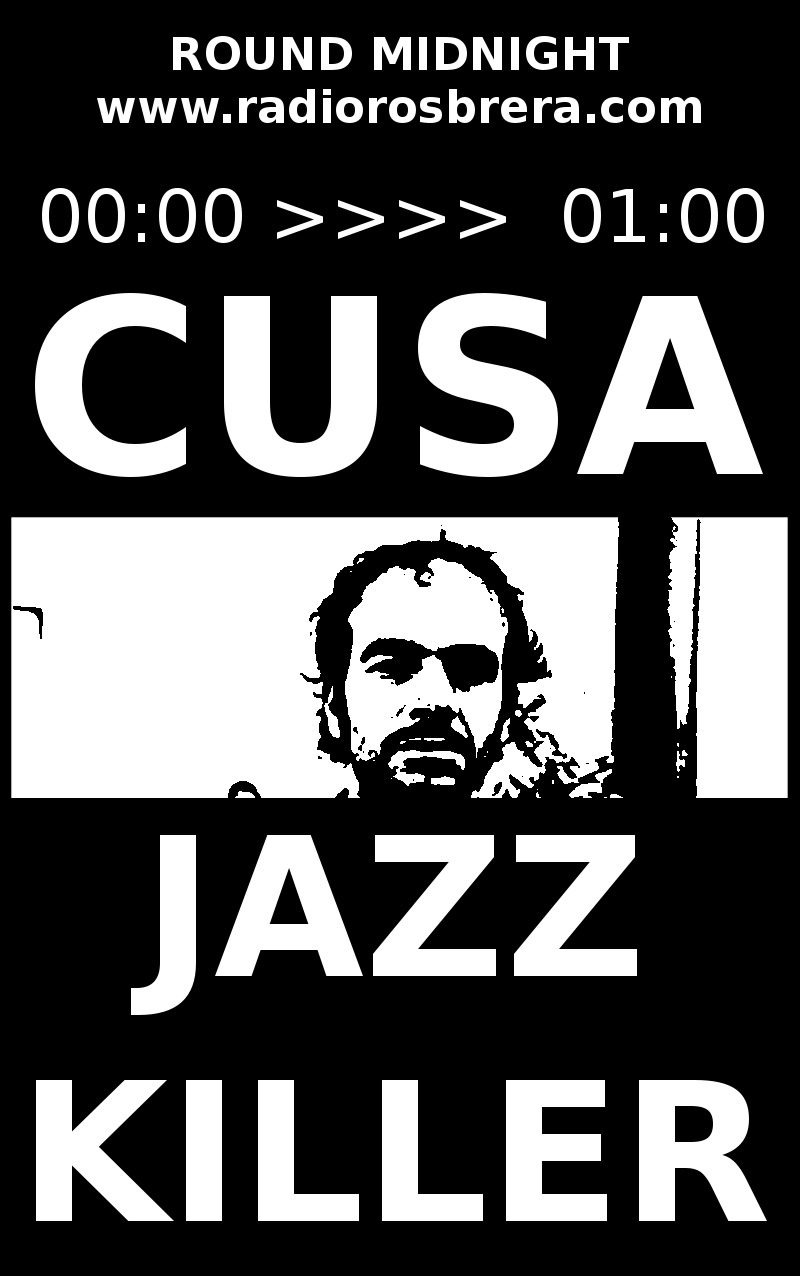IL MUSICISTA NUDO”
PROGETTO DIDATTICO DI FRANCESCO CUSA
(aperto a chiunque, a qualsiasi livello di preparazione e competenza)
- La creazione di strutture musicali semplici e complesse a partire dall’improvvisazione. - Elementi di ritmica e poliritmia.
Il corso di musica d’insieme è aperto a tutti i musicisti di qualsiasi estrazione ed età. Non é richiesto alcun tipo di preparazione specifica. Si cercherà di sviluppare le attitudini dei musicisti partecipanti, mediante l’acquisizione di tecniche innanzitutto ritmiche, poi melodico/armoniche, funzionali alla creazione di strutture musicali semplici e complesse. Il fine sarà quello di creare un organico stabile e finalizzato alla realizzazione di progetti e produzioni originali quali, sonorizzazioni di film, realizzazioni di colonne sonore per video e documentari, concerti ecc.
Chi può essere interessato:
- Ovviamente i batteristi ed i percussionisti, ma soprattutto gli “altri ”strumentisti che avranno così la possibilità di approfondire l’aspetto ritmico, spesso trascurato dall’insegnamento accademico.
- Tutti quelli che vorranno sperimentare un approccio “compositivo” e strutturale applicato alla libera improvvisazione musicale.
- I musicisti rock che vorrebbero “improvvisare” senza necessariamente pagare il pedaggio di frustrazione e deferenza al jazz.
- I musicisti jazz che vorrebbero “improvvisare” senza necessariamente pagare il pedaggio di frustrazione e deferenza a Charlie Parker.
- I musicisti pop che vorrebbero “improvvisare” senza necessariamente pagare il pedaggio di frustrazione e deferenza al “click”.
-Gli amanti della “fusion” schiavizzati dai “patterns”.
Le cantanti affette da croniche malattie polimetriche
Per un approccio psicologico corretto:
Buona parte dei problemi che un musicista si trova a riscontrare nel corso della sua attività, hanno poco a che fare con lo strumento o la preparazione tecnica. I fattori emotivi, in molti casi, costituiscono un vero e proprio “blocco” alla libertà espressiva.
Per tale ragione, questo corso si occuperà di sondare alcuni aspetti dell’attività musicale che soltanto apparentemente sembrano rivestire una valenza secondaria
- Come “affrontare” un concerto
- Come “affrontare” una seduta di registrazione
- Come “ascoltare” i musicisti che stanno suonando con me.
- Come “non ascoltare” me.
FRANCESCO CUSA
PROGETTO DIDATTICO DI FRANCESCO CUSA
(aperto a chiunque, a qualsiasi livello di preparazione e competenza)
- La creazione di strutture musicali semplici e complesse a partire dall’improvvisazione. - Elementi di ritmica e poliritmia.
Il corso di musica d’insieme è aperto a tutti i musicisti di qualsiasi estrazione ed età. Non é richiesto alcun tipo di preparazione specifica. Si cercherà di sviluppare le attitudini dei musicisti partecipanti, mediante l’acquisizione di tecniche innanzitutto ritmiche, poi melodico/armoniche, funzionali alla creazione di strutture musicali semplici e complesse. Il fine sarà quello di creare un organico stabile e finalizzato alla realizzazione di progetti e produzioni originali quali, sonorizzazioni di film, realizzazioni di colonne sonore per video e documentari, concerti ecc.
Chi può essere interessato:
- Ovviamente i batteristi ed i percussionisti, ma soprattutto gli “altri ”strumentisti che avranno così la possibilità di approfondire l’aspetto ritmico, spesso trascurato dall’insegnamento accademico.
- Tutti quelli che vorranno sperimentare un approccio “compositivo” e strutturale applicato alla libera improvvisazione musicale.
- I musicisti rock che vorrebbero “improvvisare” senza necessariamente pagare il pedaggio di frustrazione e deferenza al jazz.
- I musicisti jazz che vorrebbero “improvvisare” senza necessariamente pagare il pedaggio di frustrazione e deferenza a Charlie Parker.
- I musicisti pop che vorrebbero “improvvisare” senza necessariamente pagare il pedaggio di frustrazione e deferenza al “click”.
-Gli amanti della “fusion” schiavizzati dai “patterns”.
Le cantanti affette da croniche malattie polimetriche
Per un approccio psicologico corretto:
Buona parte dei problemi che un musicista si trova a riscontrare nel corso della sua attività, hanno poco a che fare con lo strumento o la preparazione tecnica. I fattori emotivi, in molti casi, costituiscono un vero e proprio “blocco” alla libertà espressiva.
Per tale ragione, questo corso si occuperà di sondare alcuni aspetti dell’attività musicale che soltanto apparentemente sembrano rivestire una valenza secondaria
- Come “affrontare” un concerto
- Come “affrontare” una seduta di registrazione
- Come “ascoltare” i musicisti che stanno suonando con me.
- Come “non ascoltare” me.
FRANCESCO CUSA


Seguimi!
PLAY MUSIC!